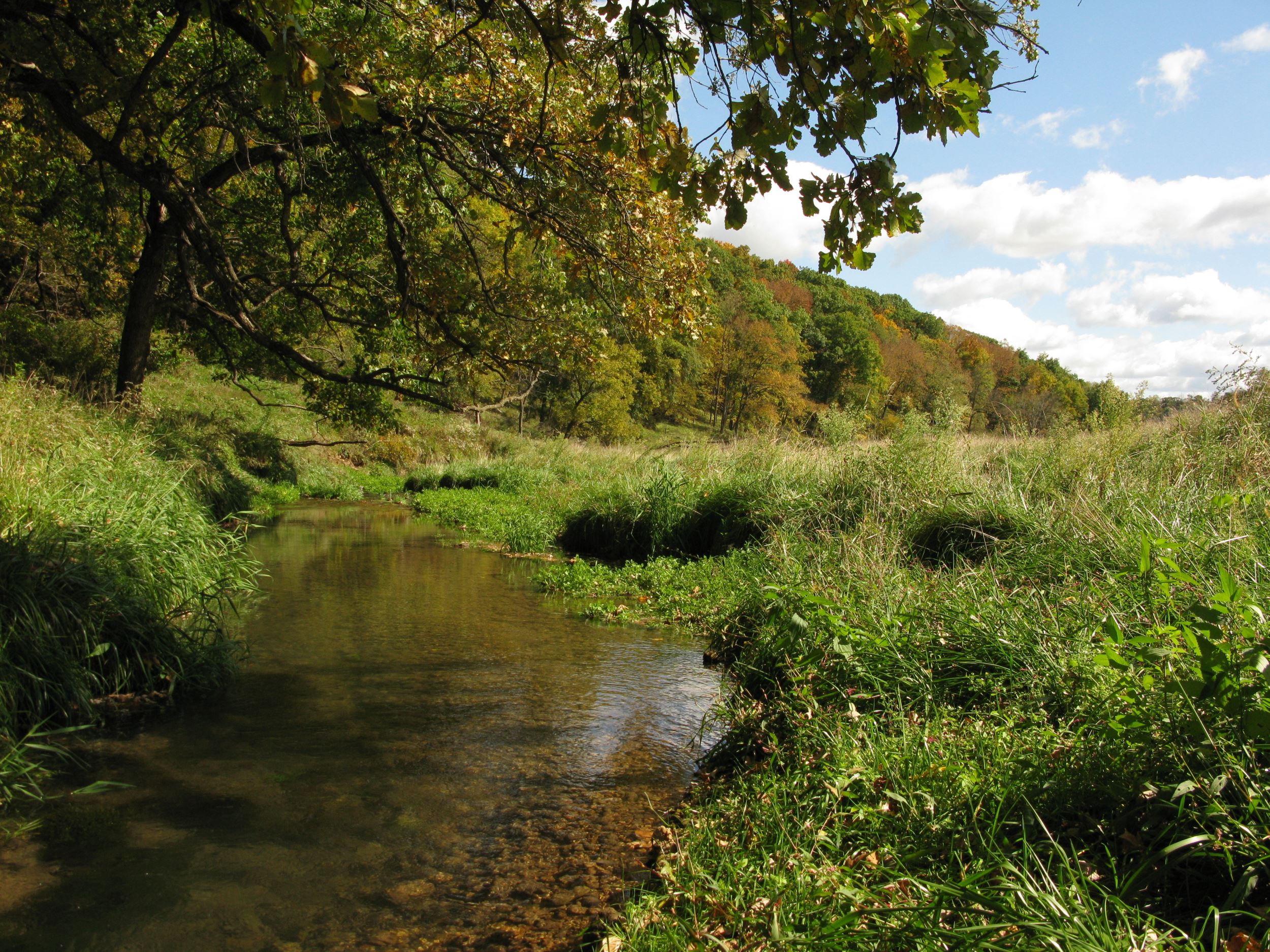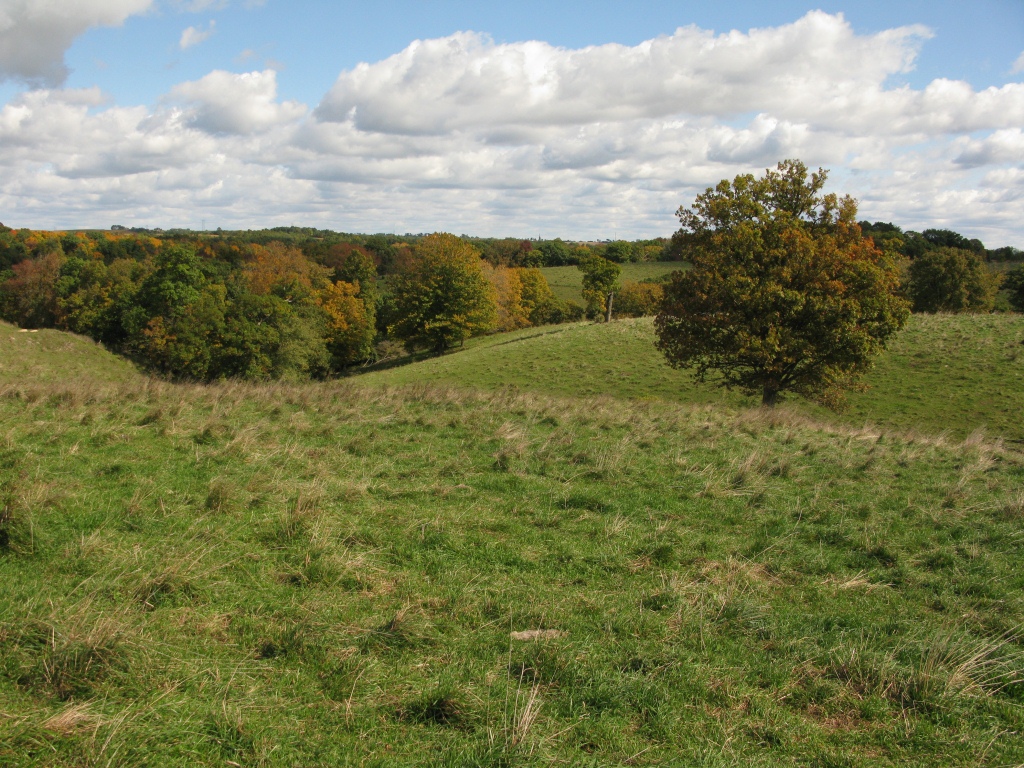Ever-flowing
By Katy Heggen, communications associate on November 5, 2018 in Blog
Five miles west of Bellevue lies Ed Weimerskirk’s farm, 484 acres of woodland, pasture and working land.

Winding through it is a pair of streams, a combined 2.1 miles of what has been called some of the best trout fishing in the region.
“To have a property with two different trout streams on it, that’s kind of a big deal,” said INHF Blufflands Director Brian Fankhauser. “To have two trout streams of that high a quality? That’s pretty rare.”
Per DNR Fisheries Bureau surveys, well over 900 brown trout per mile have been documented on both sister streams, each supporting its own self-sustaining population — an uncommon thing in a part of the state where regular restocking is common.
Big Mill Creek is the larger of the two streams. Much of the waterway has been ditched for agricultural purposes over the years, severely impacting its quality. However, approximately two-and-a-half of the uppermost miles of the creek — including the 0.6-mile stretch that passes through the Weimerskirk farm — remains largely undisturbed and capable of supporting cold water species year-round. Spilling into Big Mill Creek is Storybrook Hollow Creek, the majority of which also meanders through the farm.
“From what I’ve heard from other folks, that’s the one (Storybrook Hollow Creek) Eddie really liked,” said Fankhauser. “He was always proud of that stream, its spring and being able to have that natural reproduction of brown trout on his property.”
The farm is also home to 180 acres of woodlands, 165 acres or working lands and 139 acres of pasture, as well as several other small springs and seeps. It’s situated near several other protected lands including the DNR-owned Big Mill Creek complex and two INHF-held conservation easements. Together, these properties provide over 1,600 acres of protected land in rural Jackson County.

A future of possibilities
For years, people who knew Ed or had heard about his land speculated about what would eventually become of it. The bachelor farmer was proud of his home and had spoken with several friends — including Iowa DNR and INHF staff — about his intentions for the property, but no one seemed to know for sure exactly how he would protect it.
“We’d had ongoing conversations with Eddie over the years, but didn’t know for sure what he’d decided,” said Fankhauser.
At the age of 91, Ed passed away. It was at this time that staff learned that Ed had left his land to INHF, and that it was his wish for INHF to own the land long-term, protecting the trout streams and managing the woodland for additional income to advance INHF’s conservation efforts.
“As we begin to make decisions about the future of this place, our number one goal is to uphold Eddie’s wishes,” said Fankhauser.
As Ed intended, INHF’s top priority will be protecting the farm’s incredible water resources. The woodland and working lands will also be stewarded in a way that aligns with Ed’s vision and INHF’s conservation values.
“We’re excited to step into the next phase for Eddie’s farm,” said Fankhauser. “But we’re not going to rush into this. We’re going to take time to really evaluate what this land needs, where we can make the most impact ecologically and how to best honor Eddie’s wishes. That’s the way he wanted it.”
Just as Ed’s land sustained him all those years, these waters, woodlands and working lands will continue to sustain not only this landscape and the life it supports, but other special places around Iowa. The effect will be ever-flowing — steady, clear and true.